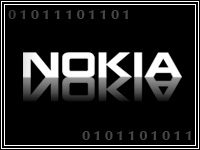
IBM on Thursday introduced a prototype chip dubbed the “Holey Optochip,” a wedding of traditional computer chip technology with the use of optical pathways. Able to transmit 1 terabit of data per second (Tbps), the prototype chipset could eventually result in faster downloads of information like apps and streaming video.

The prototype to be discussed at the Optical Fiber Communications Conference in Los Angeles, Calif., carries with it staggering processor power yet uses off-the-shelf silicon. The new IBM design provides enough horsepower to download 500 high-definition movies in one second or transmit the entire contents of the U.S. Library of Congress in an hour.
A crucial link in processing the massive amount of data required to feed consumers’ computing needs spans only a few feet. Data farms used by Apple and others to stream data are composed of hundred of high-speed computers just feet from each other. Being able to cross that short distance faster can mean the difference between smooth or jerky video on your iPad.
For chip manufacturers such as Intel, slowed by a depressed market, the news could not come at a better time. Faud Doany, an IBM researcher familiar with the project, tells Tech News World the chip doubles the data transmission power of traditional 10 megabit per second high-speed connections. The Holey Optochip simply modifies designs already available to chip makers.
Doubling Traditional Chip Capacity
The Optochip provides a “complete optical transceiver in a compact transistor design,” Doany said. A traditional 90-nanometer IBM transceiver with 24 receiver and transmitter circuits has 48 holes in the silicon — called “optical vias.” Like opening up a new road during a traffic jam, by punching holes in the silicon chip, IBM freed up more lanes for data to travel. Each of the 24 transceivers can send or receive 20 gigabits of data instead of the traditional 10 gigabits.
All of this is good news for both chipmakers and consumers, said In-Stat silicon analyst Eric Higham. “Chipmakers have heavily targeted data storage because of the higher price,” Higham told TechNewsWorld.
What makes the news from IBM so intriguing is it targets both the move from silicon to optics for pushing mountains of data and the economics of the chip-making industry. “‘Off-the-shelf’ is a codename for lower-cost,” Higham said.
The Name of the Game Is Bandwidth
“The whole name of the game these days is bandwidth — at the root of that is video, high-definition, especially,” Higham said. If 3D video becomes common, that will triple the bandwidth needed by consumers, he stated.
While the first use of the chip design will likely be supercomputers that crunch massive amounts of data, five to seven years later, the optical chipset could be part of business computing, said Doany. He hesitated to say whether the average PC would ever be powered by such the chip. While IBM won’t make the Holey Optochip, the design will be heavily used by the company, he said.
“Our goal is to prototype the best-of-breed optical transceiver,” Doany said.
For IBM, success of the Holey Optochip could rest not on impressive speed, but on keeping costs down. If the end design is very expensive, the chipset will be ignored by Intel and others, Higham says.
However, chipmakers may decide higher data transfers are worth a higher price. Unlike PC sales, there is no sign of a slowdown in demand for the infrastructure used to satisfy consumers’ unyielding desire for more data.














































